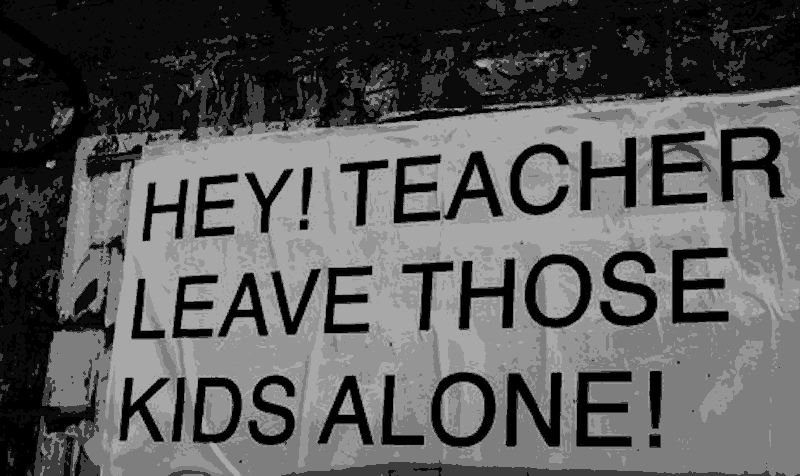In a world where chaos reigns supreme, is it time for us to throw discipline and structure in education out the window? Can we afford to let students run amok, making their own rules and forging their own paths to success? Let’s explore the notion of “Unstructured Education” and its potential impact on student development and the future of our society.
We’ve heard the rallying cry, “Hey Teacher, Leave Those Kids Alone!” But should we really heed this call and let the little rascals roam free, unburdened by the constraints of rules and order? Sure, it sounds appealing – who wouldn’t want a world where everyone does as they please, consequences be damned? Who cares if they’re prepared for the real world, where deadlines, responsibilities, and collaboration are the norm?
But here’s the thing: Maybe, just maybe, structure and discipline in education exist for a reason. Perhaps they’re not there to stifle creativity or crush individuality but to foster a sense of responsibility and prepare our youth for the challenges that lie ahead. So, before we jump headfirst into the uncharted waters of “Unstructured Education,” let’s consider whether we’re setting our future generations up for success or simply setting them adrift in a sea of uncertainty.
More on this below. Keep reading.
Is Ditching Discipline in Education a Recipe for Success? Exploring the Consequences of an Unstructured Approach
Nothing says “education” like letting kids run wild and do whatever they please. Who needs rules, discipline, or structure in schools, anyway? Let’s just let those little angels do whatever they want and watch as they magically transform into well-adjusted, responsible adults. It’s a flawless plan, really.
Who cares about the fact that without some semblance of order in the classroom, chaos would reign supreme? But hey, who needs to learn anything when you can just let kids be kids, right? We wouldn’t want to burden them with the pesky task of, you know, actually learning stuff.
And discipline? That’s just a fancy word for squashing their creativity and individuality. Let’s not forget that the real world is a utopian paradise where nobody ever has to follow rules or face consequences for their actions.
So, by all means, let’s sing that catchy little tune and encourage teachers to leave those kids alone. After all, what could possibly go wrong when we abandon structure, discipline, and responsibility in favor of a laissez-faire approach to education? It’s not like we’re preparing them for adulthood or anything.
The phrase “Hey Teacher, Leave Those Kids Alone” may evoke a sense of rebellion against authority figures in the context of education. However, it is essential to consider the implications of such an approach to teaching and its potential consequences.
- Importance of Structure: Structured environments in educational institutions provide students with a framework for learning. These structures encompass class schedules, rules, and regulations. They are in place to maintain order and ensure that students have a conducive learning environment. Without structure, there is a risk of chaos, which can hinder the learning process.
- Discipline as a Tool for Growth: Discipline is not synonymous with stifling creativity or individuality. It is a means of teaching students responsibility and accountability for their actions. The real world demands individuals who can adhere to deadlines, follow instructions, and work collaboratively. These skills are best cultivated through discipline and structured educational environments.
- Preparation for Adulthood: Education is, in part, about preparing students for the challenges of adulthood. The absence of discipline and structure in schools would leave students ill-prepared for the realities they will face in their future careers and personal lives.
- Balancing Creativity and Order: It is possible to strike a balance between nurturing creativity and maintaining discipline. Effective educators can encourage creative thinking while still upholding classroom rules and expectations. This approach allows students to develop critical thinking skills while respecting boundaries.
In summary, while the phrase “Hey Teacher, Leave Those Kids Alone” may convey a sentiment of rebellion, it is crucial to recognize the importance of structure and discipline in education. These elements contribute to a productive learning environment, prepare students for adulthood, and promote responsible behavior. A balanced approach that fosters creativity within a structured framework is essential for the holistic development of students.










